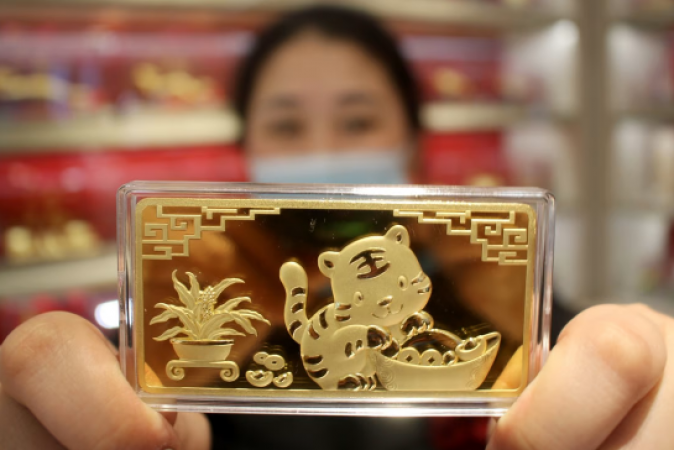
Beijing: According to information made public by the State Administration of Foreign Exchange in early December, China increased its gold reserves by 1.03 million ounces in November.
China's gold reserves rose to 63.67 million ounces, or about $112 billion, from 62.64 million ounces at the end of October, the first monthly increase since September 2019.
China is the country with the sixth largest gold reserves in the world, after the United States, Germany, Italy, France and Russia.
Also Read: Indian-origin Sushmita Shukla appointed First VP of Fed Reserve of New York
However, China's official reserve assets, which stood at US$3.29 trillion at the end of November and included US$3.1175 trillion in foreign exchange reserves, dwarf gold holdings. Most of China's foreign exchange reserves are in US dollars.
However, due to proxy holdings by state-owned miners, sovereign wealth funds and other government investment vehicles, actual gold reserves may exceed the stated amounts.
China has increased its gold holdings during six windows since 1978, according to government data, with recent increases driven by efforts by Beijing to diversify its assets.
When international markets become more volatile and the likelihood of a global economic recession increases, gold is often the preferred option.
In light of this year's aggressive US Federal Reserve interest rate hike and a strong US dollar, the value of non-US dollar assets has fallen sharply.
Also Read: Why has the RBI introduced an e-rupee?
The World Gold Council reports that the top buyers this year were Turkey, Egypt, Uzbekistan, Iran, India, Qatar and the United Arab Emirates.
It is believed that China will buy gold to hold less assets in US dollars. According to the most recent official data available, China's US dollar assets accounted for 59% of its foreign exchange reserves in 2016.
However, despite a lack of recent official data, China is believed to be diversifying its holdings after selling US$113.9 billion of US Treasury bills during the year ending September.
According to the World Gold Council, China's 63.67 million ounces of gold reserves – about a quarter of US holdings in 2017 – are relatively small compared to other countries.
The 3.3% of China's reserve assets in gold is roughly equal to the percentages of Saudi Arabia, Indonesia and Mexico.
However, it is still lower than other comparable economies such as Japan (3.67%), India (7.7%), and the US (66.6%).
China last added more than 3.4 million ounces between November 2018 and September 2019.
Between June 2015 and October 2016, when the stock and forex markets were in freefall, China added 25.35 million ounces, peaking the growth.
Given that China is the world's largest consumer, the decision to increase gold holdings is justified.
To meet domestic consumption, which is set to grow 36.5% annually to 1,120 MT in 2021, imports are essential.
The 2021-25 gold industry development guidelines published in November by the semi-official China Gold Association consider gold to have important and "irreplaceable" roles in hedging, holding value and preserving financial security.
The guidelines highlight plans for significant investment in exploration and mining, with estimates that China's gold consumption could reach 1,300 metric tons in 2025.
Also Read: Journalists and other employees of the New York Times are on 24-hour strike
Domestic gold production is estimated to increase from 444 MT in 2021 to 530 MT by 2025.
Over the same time period, the amount of gold produced using imported materials would increase from 115 metric tons to 130 metric tons.